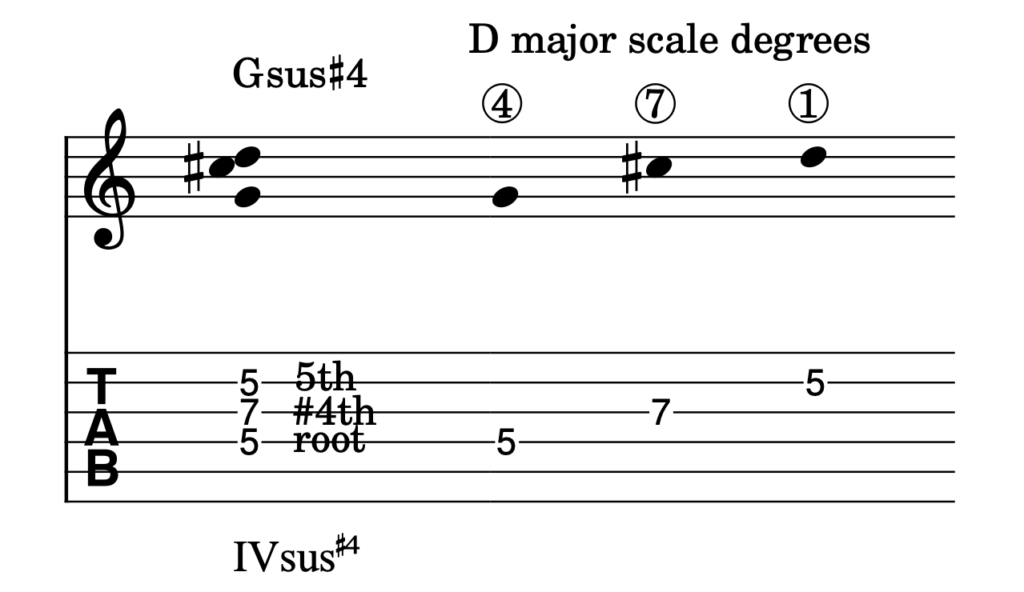Beautiful Dissonance: The Sus#4 Chord
In part one of this series on suspended chords we learned what a suspended chord is, how it’s formed, and some of its many uses. In this article we’ll discuss a simple yet very interesting chord: the sus#4.
Sus#4 - Lovely Lydian
In a major key, the 4th scale degree is located a half step above the 3rd scale degree. The same is true of major triads: the “4th” is found a half step above the “3rd” of the major triad. (For a review of the major scale, read “The All-Important Major Scale“.)
To build a diatonic sus chord from the G triad (the IV chord in the key of D), we have to raise the 3rd of the G major triad by two half steps (two frets) instead of just one half step (one fret). When we raise the 3rd a half step, the resulting note is the 4th of the major triad. When we raise the 3rd of the major triad by two half steps, the note is the #4. (For a review of triad formation, see “Essential Chord Knowledge: Major & Minor Triads“.)
This means that the resulting G suspended triad is actually called a Gsus#4, because the suspended note is the #4 relative to the G major triad. However, this #4 of G major is the note C#, which is the seventh scale degree in the key of D major. For this reason, the Gsus#4 triad is diatonic to the key of D major, and thus eminently useable and unique.

Listen to that Gsus#4 again and the wonderful tension it creates. A sus#4 chord is also known as a Lydian chord. We’ll talk about Lydian more in a subsequent lesson. All you need to know now is that on the 4th degree of a major scale, you can form a sus#4 chord and resolve it to the major IV for an outside-the-box sound. But in essence, just like the Mixolydian scale is a major scale with a lowered 7th degree, the Lydian scale is a major scale with a raised 4th degree.
How Do I Apply Sus Chords To My Playing?
As mentioned in part one of this series, the most common way is to play a suspended chord and then resolve to the major or minor chord of the same name.
So if your chord progression is IV-V-I, which in the key of D is G, A, D, you can insert suspended chords before resolving to each chord.

Suspended chords are very effective as passing chords—as bridges used to pass from one chord in the progression to another.
To start applying suspended chords to your playing, take a simple chord progression, and add the respective suspended chord before each chord.
If you’re interested in learning music theory in a straightforward way that will improve your playing and improvising skills in open tuning, check out our three hour video course, music theory book, and private lesson opportunities. New articles are published every week—stay in the loop by joining our mailing list below.
Join our mailing list to receive the latest tips!
RELATED LESSONS YOU’LL ENJOY: